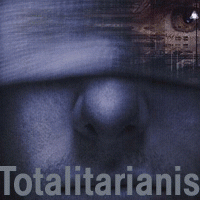![]()
Thu, Nov 17, 2011 | Rubin Reports | By Barry Rubin
Pleasantly Surprised To Find a Very Good Analysis of My Oslo Syndrome Article
Review of the Oslo Syndrome: “The Oslo Massacre: An Israel/Palestine angle?”
When an author writes a serious article he’s always pleased to find a serious reader, especially when his words have been dishonestly distorted by a foreign minister, a deputy foreign minister, and an ambassador. Such was the fate of my analysis of the terrorist massacre in Norway, “The “Oslo Syndrome” and the Terror Attack in Norway.”
Now a retired Army colonel and a contributing editor of American Diplomacy, James L. Abrahamson, has written an actual analysis of what I wrote on this controversial issue, understood my points, and pointed out the misquotes created by the Norwegian media and government. What could be better than that? American Diplomacy is an important journal by and for diplomats and officers.
He concludes:
“What Rubin wanted his readers to learn from Breivik’s horrible attacks was, first, that mass murder of civilians is NEVER justified, and, second, that if the public without exception condemns terror, those who engage in the tactic will abandon it when it no long appears `politically successful.’”
This article also confirms my conclusion that in general American diplomats and military officers, both those still in service and those retired, understand the current situation far better than their politician masters and the academic “experts.” There is hope if these people speak out.
Thank you, Colonel Abrahamson, and faithful readers everywhere.
Read the review of Rubin’s article by James L. Abrahamson below:
When Barry Rubin, Director of Global Research in International Affairs and Editor of the Middle East Review of International Affairs, begin writing about the 22 July 2011 terrorist murder of 8 people in Oslo and 69 teenagers attending the governing political party’s youth camp on an island about 25 miles northwest of Oslo, he acknowledged that he was about to deal with “the most sensitive aspects” of a “very sensitive subject.” Having something important to say, and a close student of terrorism for the past 35 years, Rubin nevertheless pushed ahead, probably aware that his point of view would be distorted and draw much personal criticism — as it has.
Other commentators, and some officials, also tried to account for the actions of the heavily armed perpetrator, Anders Behring Breivik, whom the police easily arrested on the island. Early on, Deputy Police Chief Roger Andersen, for example, placed responsibility for Breivik’s behavior on the Left’s usual enemies by describing him as a fundamentalist Christian, which he is not, and an Islamaphobe, which he clearly is.
The phobia might explain the car-bomb attack on the building housing the office of a prime minister whose party had promoted Muslim immigration and, as an advocate of multiculturalism, often yielded to Muslim demands that conservative Norwegians regarded as undermining their culture and its Western values.
As an explanation for the mass murder of Norwegian teenagers, however, being an Islamaphobe does not work so well, though it might have if Breivik had instead attempted to slaughter a gathering of young Muslims. Nor can one readily explain the murder of Norwegian teenagers by reference to his plentiful writings condemning Marxists, multiculturalists, Muslims, and the well known efforts of Europe’s left-wing politicians to silence conservatives.
In an effort to explain Breivik’s behavior, other commentators emphasized Europe’s many past surrenders to the Continent’s unassimilated Muslim populations. They too found themselves under attack — for being anti-Muslim. In fact, they often did not so much blame Muslims for their lack of assimilation and their expectations of European governments; they instead criticized European populations and governments that invited Muslims to immigrate but subsequently failed to insist that they assimilate into European culture and to assist them in that process. In the view of those members of the media, accommodations to Muslim culture had typically failed to breed goodwill even as they caused native Europeans to feel threatened. Those surrenders now seemingly further the growth of right-wing political groups and parties and increase the likelihood of further inter-ethnic attacks — though surely not on European teenagers at a summer camp.
The task that Rubin set for himself in his essay was accounting for violent behavior directed at a target at which Breivik’s writings only hint. As a consequence Rubin must move beyond the available evidence and offer a hypothesis that involves some speculation, even about Breivik’s subconscious. Rubin’s speculation is nevertheless very insightful and points the West toward a useful path in its response to terrorism, whatever role Breivik’s innermost thoughts might have played in shaping his conduct.
As Rubin sees the situation, the mistake of Europe’s left and its multiculturalists is displaying an ambivalent attitude toward terrorism, approving it if engaged in by preferred groups who direct it at those not well regarded. In Norway’s case, this meant accepting the mass murder of Israelis by Palestinians — who deploy car bombs and send suicide bombers into crowded public thoroughfares, onto buses, and into restaurants — and by Hamas — who launch poorly aimed rockets toward Israeli villages. All those actions intend the indiscriminate murder of civilians. Such terrorism by Hamas in Gaza and from Palestinians on the West Bank, the Norwegian government was prepared to publicly justify, even as it condemned better-targeted Israeli responses aimed at terrorists.
At the time of Breivik’s attacks, the Norwegian government was trying to break the Israeli blockade of Gaza, which would facilitate the flow of arms to Hamas, and to offer immediate recognition of a Palestinian state without any commitment on the part of the proposed new government to end terrorism directed at Israel.
Ironically, building youthful support for that policy provided one of the themes of that summer camp attended by some six hundred teenagers regarded by Norway’s governing party as its future leaders. Though the campers and their guides would not have seen it that way, Rubin is so bold as to suggest that the young people were, in effect, “engaged in what was essentially … a pro-terrorist program.” Blunt words, sure to gain attention and make trouble for Rubin, but honesty must sometimes be intellectually brutal. Nor should a pro-terrorist program regarding government policy be confused with a terrorist training camp, as some of Rubin’s critics have dishonestly claimed he had described the gathering of the youngsters.
Rubin also made it clear that he was not implying that the young people or members of the Norwegian ruling party “had it coming.” A long-standing, and unqualified opponent of terrorism, Rubin clearly stated: “victims never deserve to be murdered by terrorists.” To him, neither what the party was teaching the teenagers nor the work of those in the Oslo governmental officers represented, was, in any way, “justification for a horrendous terrorist act.”
What Rubin wanted his readers to learn from Breivik’s horrible attacks was, first, that mass murder of civilians is NEVER justified, and, second, that if the public without exception condemns terror, those who engage in the tactic will abandon it when it no long appears “politically successful.” To that end Rubin offered four examples from the past two centuries in which public disapproval caused terrorists to abandon a tactic they once thought would rouse the public to support the terrorists’ political aims.
In contrast, praise of terrorism has inspired more terrorism. According to an aide to Osama bin Laden, the public response to Palestinian use of terror against civilians inspired the attacks on 9/11, which in turn inspired many Palestinians to join the PLO. Yasar Arafat’s use of terrorism enabled him to be applauded at the UN for a speech threatening more terror and, in time, to receive a Nobel Peace Prize. “Why should others,” Rubin asked, “not dream that the road to victory is paved with the corpses of deliberately murdered civilians?” Why would terror not also have inspired a Norwegian Islamaphobe?
To avoid that, the West, Rubin argues, must make no distinction between “good” and “bad” terrorism. It must also condemn grossly insensitive statements like that of Norway’s ambassador to Israel who “distinguished between ‘bad’ terrorism in Norway and ‘understandable’ terrorism against Israelis.” Thinking like that, Rubin wrote “opens the door” to a man like Breivik who believes “his country is ‘occupied’ by leftists and Muslims.”
What distinguishes Breivik from many others was not his political orientation or his feelings about Islam; it was that he believed his terrorism, which he acknowledged to be “atrocious but necessary,” was a means to rally the European public to his side. As with Osama bin Laden, Breivik believed that terrorism, in Rubin’s words, “would work on behalf of his cause;” it was needed in order to “change minds, gain support, and bring victory.” According to Rubin,the “successful terrorists and their Western enablers” were those who unintentionally suggested a strategy and prompted a “mentally unbalanced” man with “a material basis for his imaginings” to resort to mass murder.
Can we now truly — or ever — know the state of Breivik’s mind with certainty? Probably not. Rubin’s point is nevertheless valid. The world’s leaders and those whom they represent must condemn all terrorist mass murder of civilians. This writer would add that the world must also never fail to distinguish terrorist mass murder from the collateral civilian deaths that occur when government armed forces kill illegal insurgents who, in violation of international law, conceal their militant status and take refuge in mosques, schools, hospitals, and among civil populations, from whom they receive intelligence, logistic support, and shields useful in deterring Western armed forces.
Originally published in AmericanDiplomacy.org
Following graduation from West Point (1959), James L. Abrahamson, Col. (ret.) began a 27-year career in the US Army, during which he earned a master’s degree from the University of Geneva (1964) and a Ph.D. from Stanford University (1977).



 RSS
RSS











Review of the Oslo Syndrome: “The Oslo Massacre: An Israel/Palestine angle?” | Middle East, Israel,. http://t.co/xSmGR24P
Review of the Oslo Syndrome: “The Oslo Massacre: An Israel/Palestine angle?” | Middle East, Israel,. http://t.co/xSmGR24P